It was all about the frustration of trying to make films but not having the best gear...I spent two years saving up for a 16mm camera, which cost several thousand dollars, and I was only getting paid 75 bucks a week. I lived at home with my parents because I couldn't afford not to.
Peter Jackson was born in Pukerua Bay, New Zealand, a small seaside town not far from the country’s capital city, Wellington. An only child, Jackson’s imagination was inspired by a picturesque coastline of cliffs and caves. At an early age, he was captivated by the television series Thunderbirds. With its marionettes, futuristic vehicles and ingenious special effects, it fed his interest in science fiction and model building. By age nine he had commandeered the family’s home movie camera to make his own short films, trying to reproduce the special effects he loved. His imagination received another powerful stimulus when he first saw the 1933 film King Kong on television. The next morning, he began experimenting with the stop-motion animation technique that had so excited him in the movie.

For the rest of his childhood and adolescence he continued to make short films, devising his own special effects, and painstakingly animating models inspired by the fantastic monsters he admired in the films of the American animator and director Ray Harryhausen. At 16, he dropped out of school and took a job as apprentice engraver in a newspaper’s photography department, living with his parents to save money for camera equipment and film. When he acquired his first 16mm camera, he set out to make a short film to familiarize himself with the equipment. This project, a tongue-in-cheek science fiction horror fantasy called Bad Taste, gradually grew into a full-length feature film. The project would consume four years of his life. While his contemporaries were going to university or embarking on more conventional careers, Jackson continued to labor every weekend on his project. He wrote, directed and photographed the film, building all of the models and special effects, playing multiple roles, including the lead, and recruited neighbors and friends to fill out the cast.

A grant from the New Zealand Film Commission enabled Jackson to quit his day job while he edited and scored his homemade feature. To his surprise, the Commission decided to send Jackson’s film to the 1987 Cannes Film Festival. Astonishingly, Bad Taste, with its amateur actors and improvised special effects, charmed the festival goers, and Jackson landed deals to distribute the film commercially in 12 countries.

Fresh from his triumph at Cannes, Jackson returned home as a certified professional filmmaker. New Zealand’s film industry was still in its infancy, but the head of the country’s film commission, James Booth, had faith in Jackson’s talent, and formed a partnership to produce Jackson’s next two features. The partners followed up the surprise success of Bad Taste with a raunchy puppet film, Meet the Feebles (1990). Like Bad Taste, Meet the Feebles acquired a cult following. Jackson’s first professional live action feature, Braindead (released as Dead Alive in the United States), established him on the international scene as an accomplished director of horror films, one with a refreshingly giddy sense of humor. As Jackson assembled a team of trusted collaborators, he co-founded a production facility, Weta Workshop, to provide special effects for his films.

By this time, Jackson had formed a professional and personal partnership with screenwriter Fran Walsh. Although the pair thoroughly enjoyed their horror and fantasy creations, they were looking for a project that demonstrated a wider range. In Heavenly Creatures (1994), they dramatized one of the most shocking murder cases in New Zealand’s history, that of a teenage girl who murdered her mother with the assistance of her best friend. Jackson showed unusual sensitivity in exploring the relationship between the two disturbed young girls, and employed his growing expertise with special effects to render the girls’ shared world of fantasy. The film won international acclaim, including an Oscar nomination for Jackson and Walsh’s screenplay, and focused the industry’s attention on the film’s hitherto unknown teenage star, Kate Winslet.
Jim Booth’s untimely death brought Peter Jackson to a crossroads in his career. In a break from conventional feature film production, he indulged both his love of cinema history and his penchant for parody in the mock-documentary Forgotten Silver (1995), recreating the history of motion pictures, as seen through the career of a fictitious New Zealand filmmaker. Jackson returned to his genre roots with The Frighteners, a comedy horror film starring Michael J. Fox as a psychic private detective.

In a little less than a decade of nonstop movie-making, Jackson and his team had built up a formidable special effects production capability, and were ready for a large-scale project. Jackson dreamed of an epic fantasy with swordplay and monsters, along the lines of Ray Harryhausen’s Sinbad films. As Jackson and Fran Walsh struggled to develop an original fantasy story, they found themselves repeatedly referring to The Lord of the Rings, the beloved trilogy of fantasy novels by J.R.R. Tolkien (1892-1973). Jackson and Walsh had both read and loved the books as young people, but they assumed the film rights were already held by a major studio and that other producers and directors would have preemptive claims to the material.

As it happened, the film rights to the novels were owned by independent producer Saul Zaentz, who had made a fortune with the jazz and rock record label Fantasy Records before producing such prestigious motion pictures as Amadeus and The English Patient. Zaentz had already produced an animated version of The Lord of the Rings. The animated feature had failed at the box office, and outraged fans of the books by compressing all three novels into a single film. Zaentz had no interest in revisiting the material. At the time, Peter Jackson had a producing deal with Harvey Weinstein of Miramax Films, and Weinstein was able to procure the rights from Zaentz. The project took several years to develop. When Miramax was sold to The Walt Disney Company, Disney ordered Weinstein to concentrate on lower-budget projects. Disney insisted that the sprawling trilogy be compressed into a single feature film. Jackson firmly believed this abridgement would be another betrayal of material treasured by millions of readers around the world.

After trying every other studio, Jackson finally found a backer in New Line Cinema. New Line was ready to support a daring scheme of Jackson’s to film all three books of the trilogy simultaneously. Filming the entire cycle at once would enable the filmmakers to use the same sets in all three films without tearing down and rebuilding. It would also avoid the potentially crippling salary increases the film’s mostly unknown stars would demand if the first installment proved to be a success. The savings of shooting all three pictures concurrently would be substantial if the films were successful, but if the first part failed at the box office, the second two parts might well go unfinished and the losses would be enormous. It was a tremendous gamble, but New Line had faith in Jackson’s vision for the material.

Jackson insisted on shooting the entire trilogy in his native New Zealand, to take advantage of the country’s spectacular scenery and the special effects production capacity he had built up in his previous films. While a more modest motion picture might complete principal photography in a month or two, The Lord of the Rings shoot kept an international cast on location in New Zealand for a year and a half.
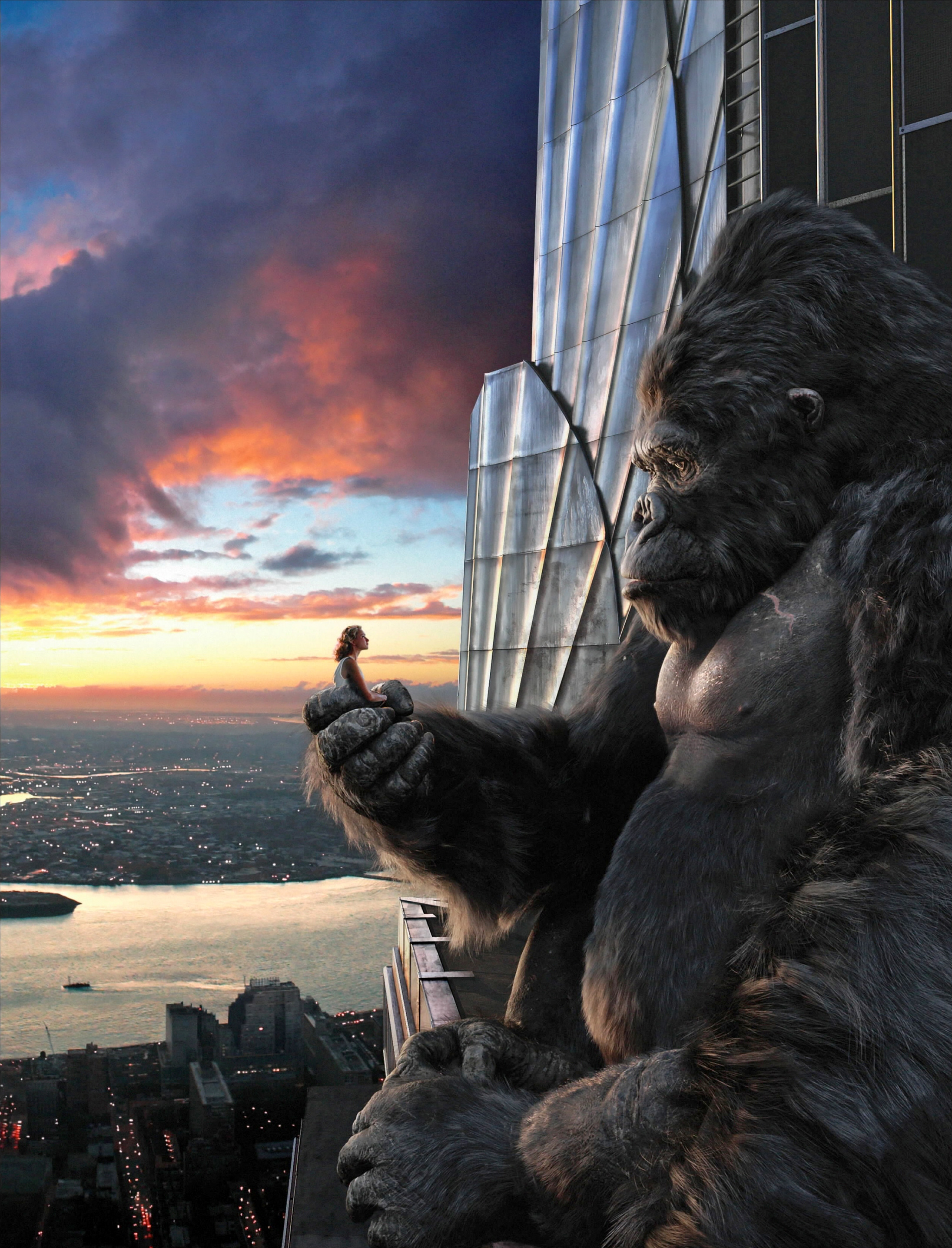
The first part of the trilogy, The Fellowship of the Ring, was released in 2001. It won an enthusiastic reception from fans of the books, who saw their story brought to the screen with unmistakable respect and affection. The film’s appeal extended far beyond the core audience of Tolkien enthusiasts, winning widespread critical acclaim and a massive international audience. The film received 13 Oscar nominations. The second part, The Two Towers (2002), was another box office smash and received an even more enthusiastic critical reception than the first. Expectations for the third part of the trilogy were raised to an almost unbearable level. No one could imagine how the third film of the series could possibly meet the standard set by the first two. No one but Peter Jackson, that is.
When The Return of the King was released in 2003, it not only met expectations, it exceeded them. Audiences found a thrilling and satisfying conclusion to the long tale, and critics acclaimed it as the strongest entry in the series, the finest fantasy film ever made. Oscar voters agreed. The Return of the King won the year’s Oscar for Best Picture, along with writing honors for Fran Walsh and the Best Director Oscar for Peter Jackson. The film won in every category in which it was nominated, 11 Oscars in all, tying the records set by Ben Hur and Titanic. The Return of the King brought in over $1 billion in its first release.
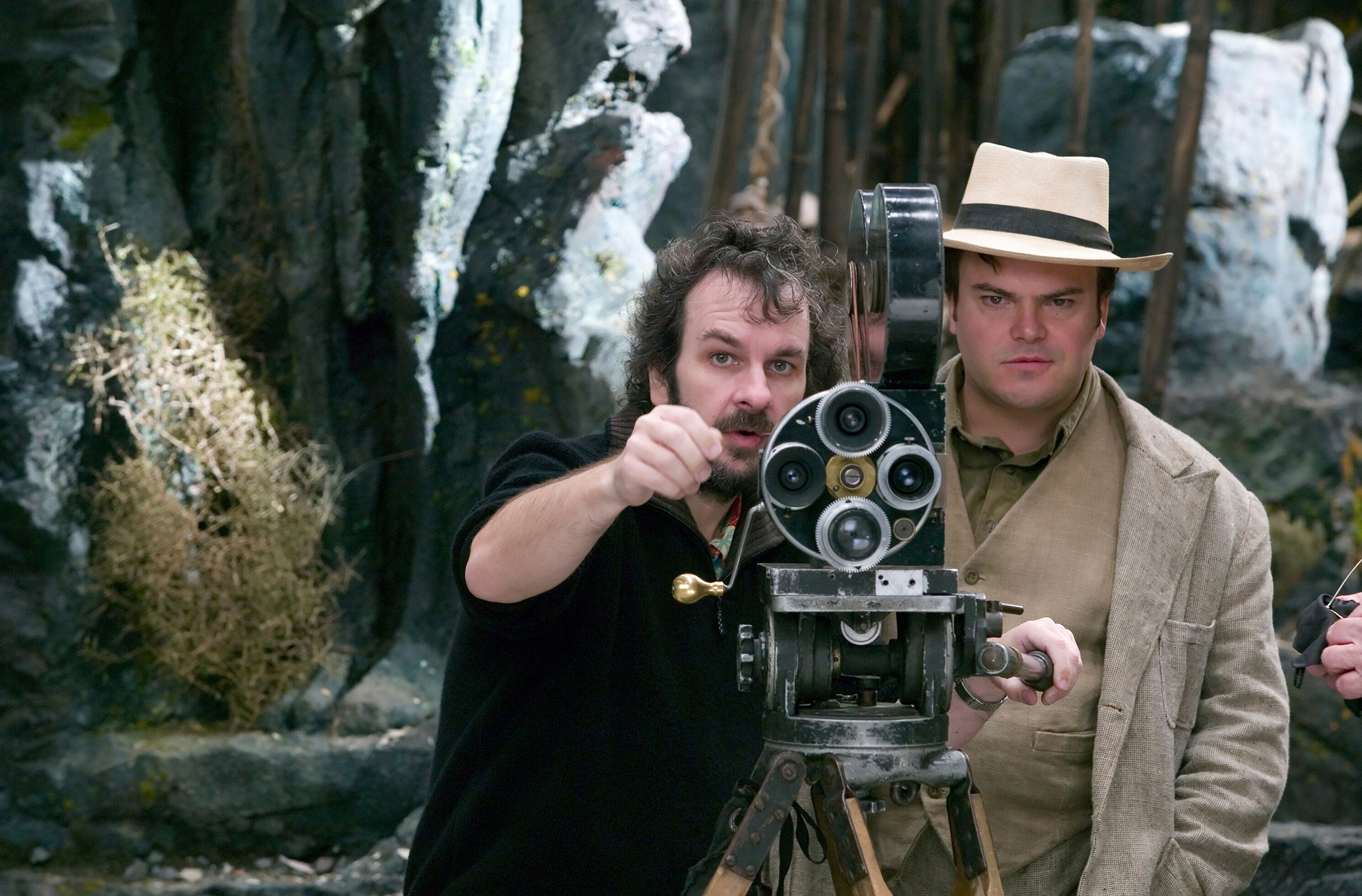
After eight years of continuous work on The Lord of the Rings, Jackson might have been expected to take a long break, but by the time the third installment was released, he had already thrown himself into realizing a lifelong dream: a remake of King Kong, employing state-of-the-art special effects to bring the story to new audiences. Jackson received a $20 million advance against the film’s gross receipts, the most lucrative deal ever made by a motion picture director. Again, Jackson chose to create his fantasy world in his native New Zealand. Unlike a previous remake, Jackson kept the action set in the 1930s, but he employed an army of computer animators to make the film’s spectacular monsters utterly believable and to make the giant gorilla of the film’s title into a fully developed character. The actor Andy Serkis, who had provided the movements for the animated character Gollum in The Lord of the Rings, performed the same duty for Kong, through the process of motion capture, in which electrodes placed at various points around the actor’s face and body relay his movements to computers, where they are reproduced exactly by the computer-generated character.
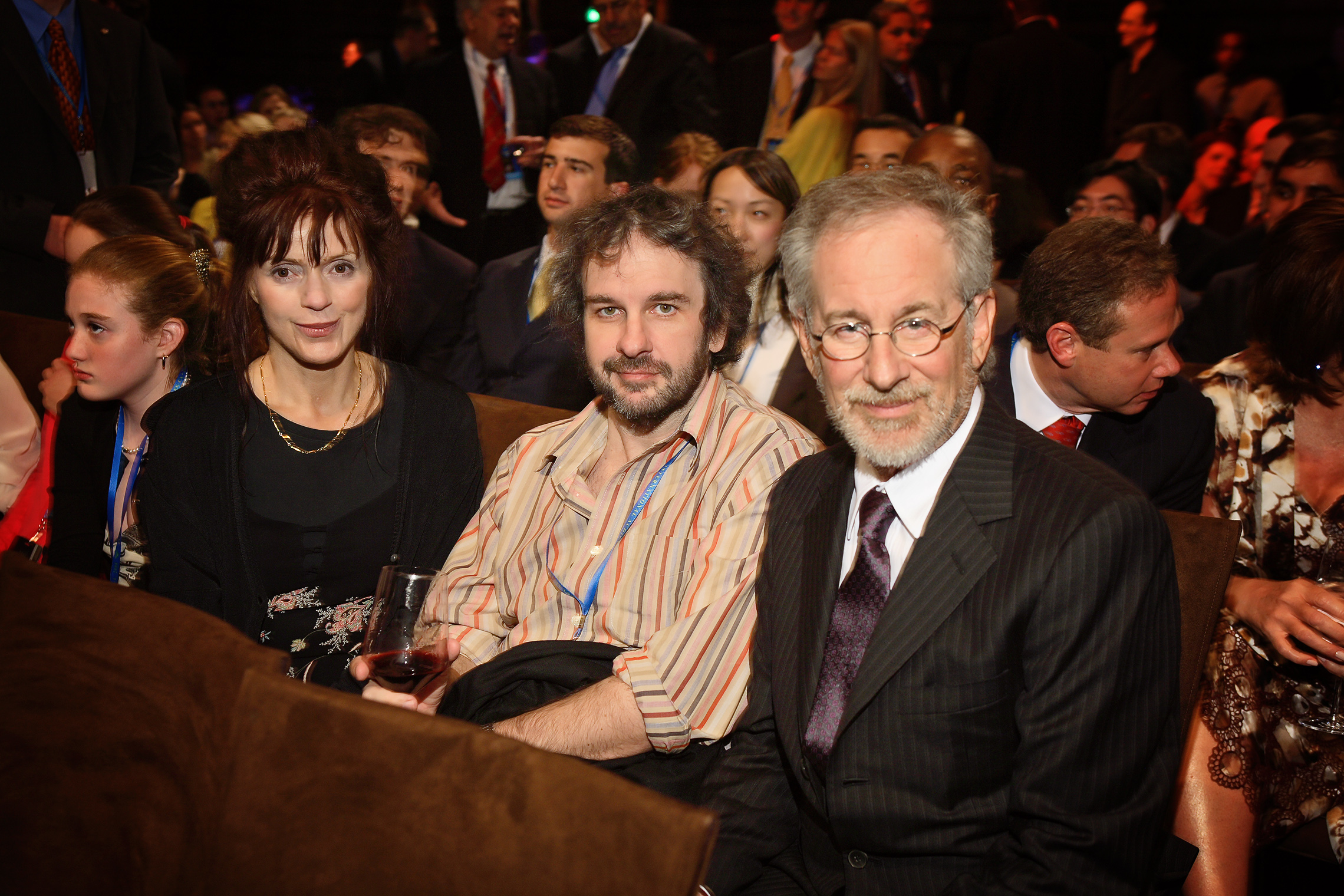
Jackson’s King Kong got off to a relatively slow start at the box office, with a disappointing first weekend in the United States, but within a few weeks, it had found its audience around the world. It became one of the most successful films of the year, and its DVD and home video sales are among the highest ever recorded. After ten years of nearly continuous work, Jackson finally allowed himself the time off he had so long postponed.
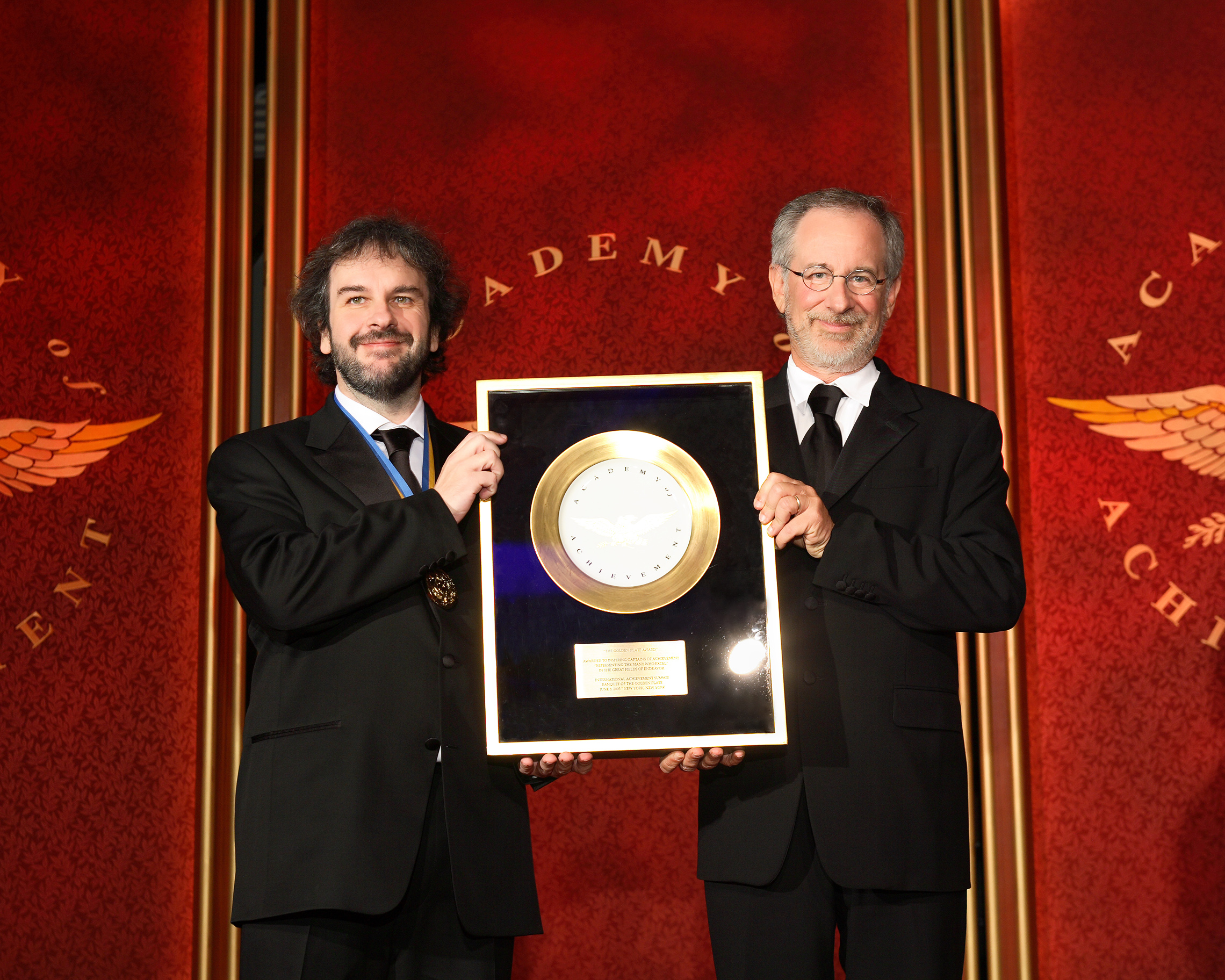
The New Zealand film industry has grown considerably since Peter Jackson began making movies in his parents’ backyard. In 1998, only four feature films were made in New Zealand; a decade later, as many as 20 films were produced there in a single year. Jackson’s Weta Workshop and Weta Digital are leading providers of special effects and animated characters for films all over the world. The Wellington complex includes three vast sound stages, post-production facilities, design studios, and warehouses full of specialized props and vehicles.

From this stronghold, Jackson enjoys long-distance collaboration with the world’s other leading filmmakers, including James Cameron and Steven Spielberg. Jackson provided special effects for Cameron’s 3-D science fiction epic, Avatar, and oversaw post-production of Spielberg’s film version of the classic Belgian children’s comic strip Tintin. Jackson plans to direct the second Tintin feature himself, with Spielberg producing. The summer of 2009 saw the release of District 9, a science fiction allegory set in South Africa, directed by a Jackson protégé, Neill Blomkamp. Jackson produced the film and financed its initial development.
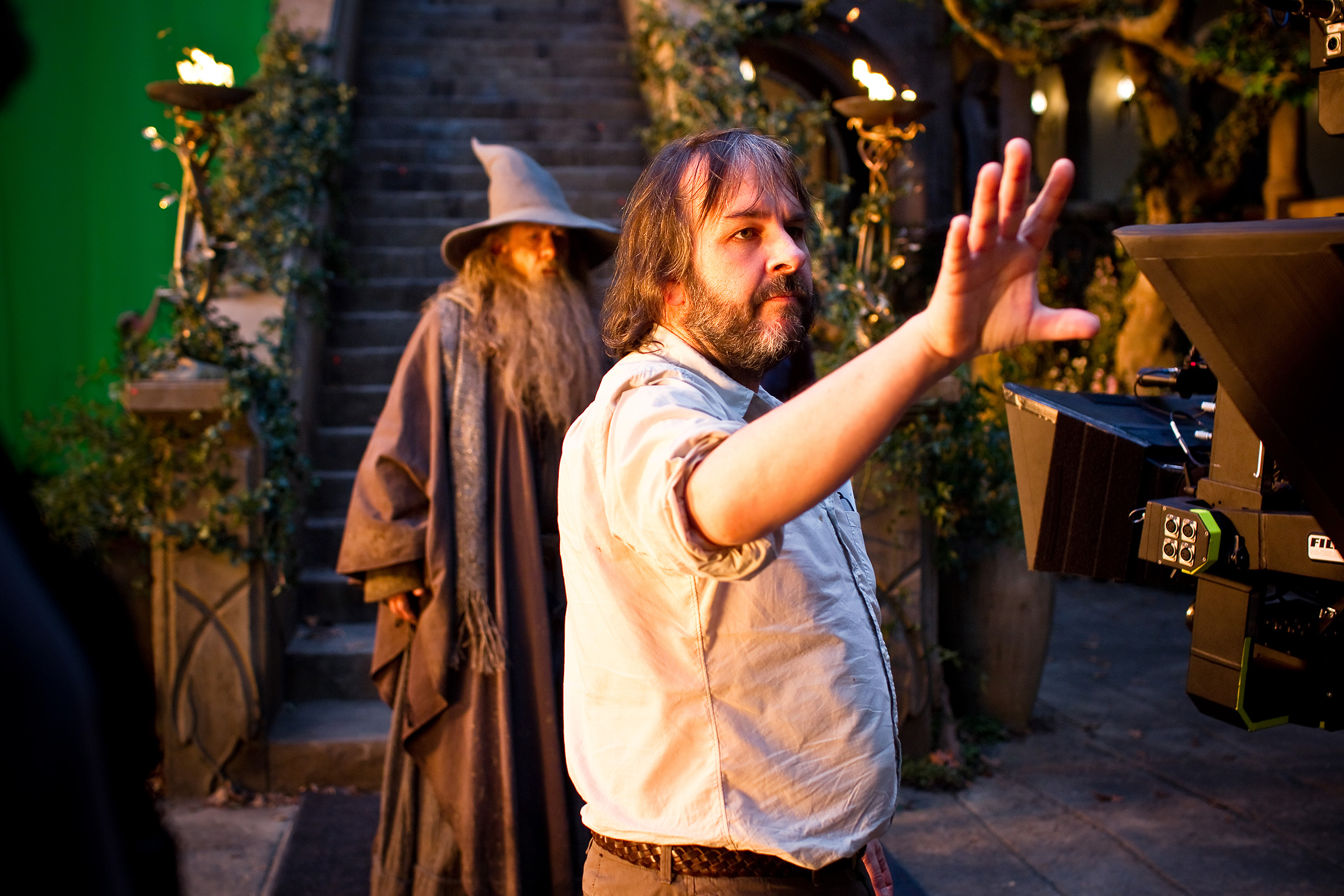
Despite these extensive production activities, Peter Jackson continues to direct as well. Jackson and Fran Walsh adapted the bestselling novel The Lovely Bones by Alice Sebold, in which a murdered girl looks down from heaven and recalls her life and death while watching her family and friends go on without her. The film’s release in December 2009 once again demonstrated Jackson’s directing talents outside of the fantasy/adventure genre. After overcoming a series of production delays and a contractual dispute with New Line Cinema, Jackson produced and directed a trilogy of films inspired by of J.R.R. Tolkien’s The Hobbit. The first installment in the series, The Hobbit: An Unexpected Journey (2012) grossed over $1 billion worldwide. It was followed in 2013 and 2014 by The Desolation of Smaug and The Battle of the Five Armies.
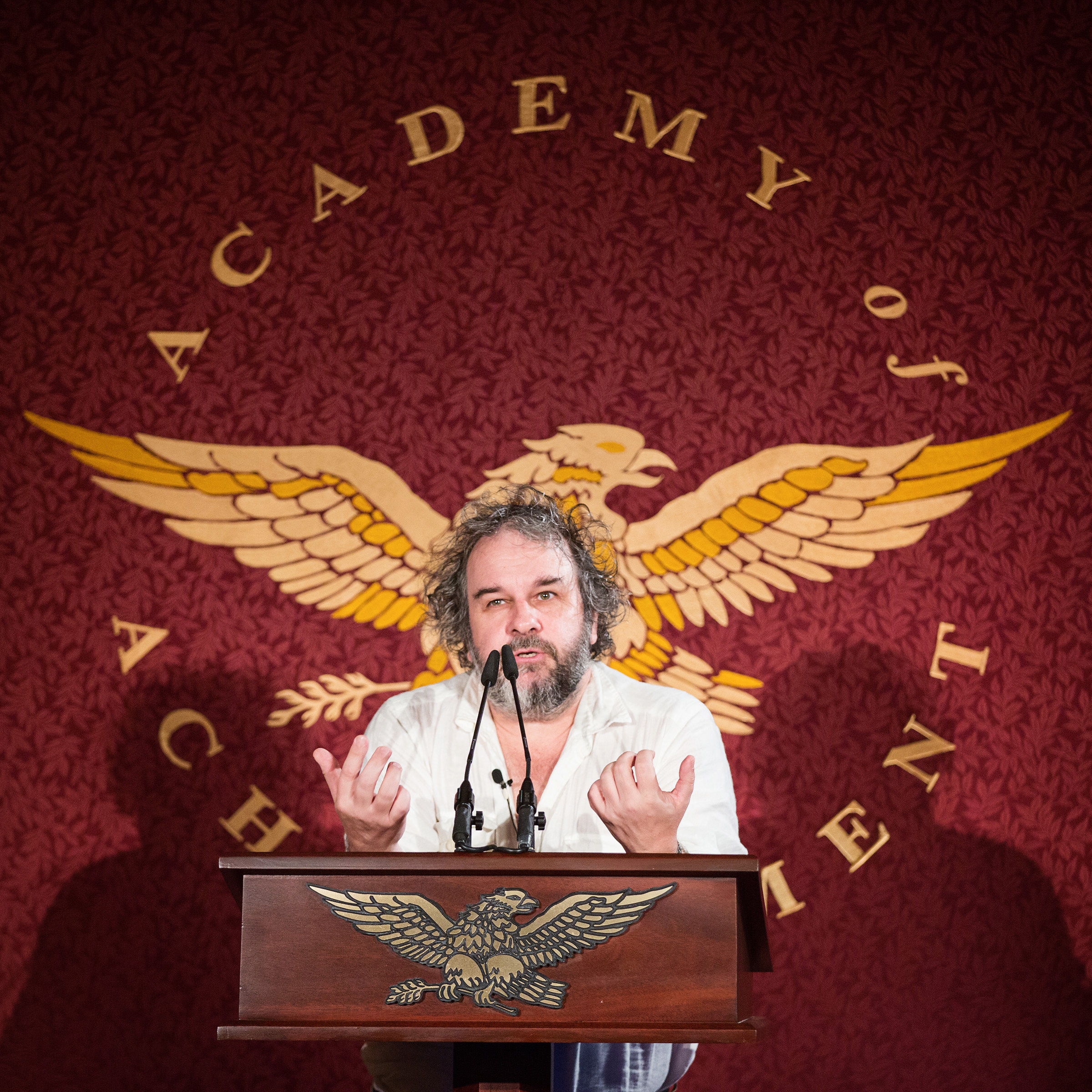
In addition to awards from the international film community, Peter Jackson has been honored by the Crown for his services to cinema and to New Zealand. In 2002, Queen Elizabeth II named him a Companion of the New Zealand Order of Merit. In 2012, he was promoted to Knight Companion of the Order (KNZM), and in 2012 to the Order of New Zealand (ONZ), his nation’s highest honor.
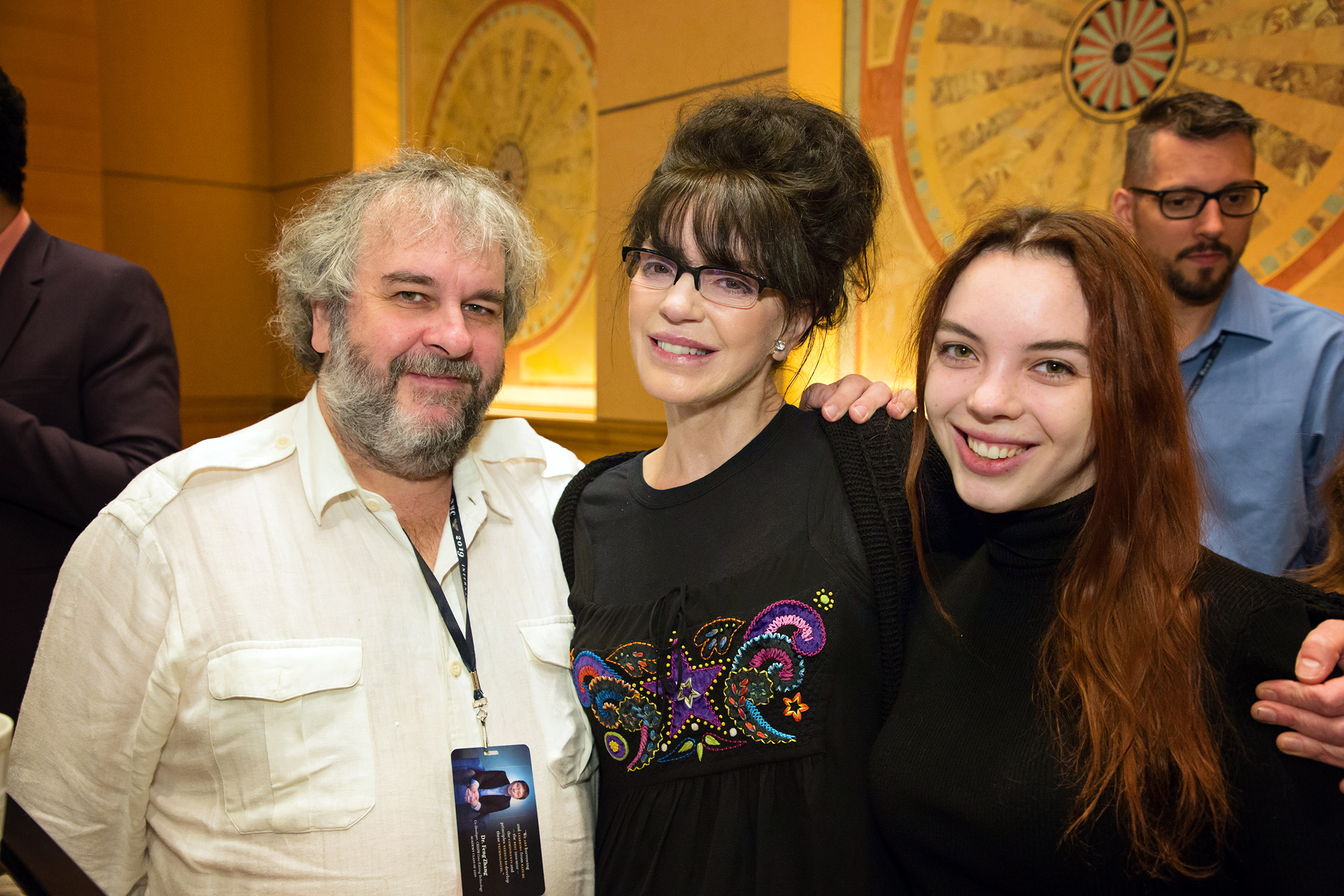
In 2018, Peter Jackson stunned audiences with a feature-length documentary, They Shall Not Grow Old. The film compiles archival footage of the First World War, digitally restored, augmented, and colorized, accompanied by narration culled from recorded interviews with veterans of the Great War. With breathtaking technological wizardry and meticulous attention to historic detail, Jackson carried his audience 100 years back in time and plunged viewers into the reality of trench warfare on the Western Front.
Today, Sir Peter Jackson and Fran Walsh make their home in New Zealand’s Miramar peninsula. They have two children.

An only child in a small seaside town in New Zealand, Peter Jackson grew up far from the centers of motion picture production. At the age of nine, he began shooting movies in his backyard with his parents’ home movie camera. As he grew older, many of his neighbors regarded his obsessive movie-making as little more than an eccentric hobby, but Peter Jackson never stopped. The hobby turned into a career when a low-budget horror film he shot with his friends on weekends became a surprise hit at the Cannes Film Festival.
Jackson acquired a reputation as an inventive director of stylish horror thrillers before branching out with the psychological drama Heavenly Creatures. This film won international critical acclaim, but Jackson was still regarded as a maker of small-scale films when he embarked on the most ambitious motion picture project of all time, a three-part live-action adaptation of J.R.R. Tolkien’s epic fantasy, The Lord of the Rings.
The three Lord of the Rings movies earned $3 billion at the box office and brought Jackson Oscars for Best Picture, Best Adapted Screenplay and Best Director. They are the most successful film series of all time. With his blockbuster remake of King Kong, Jackson also became the best paid director in motion picture history. From his massive production facilities in Wellington, New Zealand, he oversees a moviemaking empire, providing special effects, animation and design services to filmmakers all over the world.
How did you and Fran Walsh first become involved with filming The Lord of the Rings?
Sir Peter Jackson: Well, The Lord of the Rings was an idea that came from us. I had read the book when I was 17 and thought, “Wow, this would make a really cool film. I’d kind of like to see the film,” but, of course, the film didn’t really come out. There was a cartoon version of it that popped up at some point that didn’t work particularly well. But we got through a movie called The Frighteners in New Zealand, which was a big effects film. It had about 500 computer effect shots, and we had done that ourselves.
We’re very self-sufficient in New Zealand. We’re so far away from everywhere else that we tend to just think, if it’s a film that needs a lot of CG computer work, we can’t go down the road to hire Sony or Digital Domain or ILM to do our shots. We are in New Zealand, and even back in those days, where there wasn’t the communication that there is today, it’s like, well, this means that we’re going to have to get a lot of computers and do them ourselves. So okay. So we sort of always have a very self-sufficient attitude where we are, that basically don’t expect to be able to pull in rental equipment or anything else. Buy the gear, maintain it, just own it, and just get on with your filmmaking. So we’ve done that over the years.

In this particular time, which was November ’95, we had gotten about two-thirds of the way through the post production on The Frighteners. Starting to relax a little bit, starting to think about our next project, because I always like to know what I’m doing next by the time I finish a film. And we didn’t have a project, but we had these computers all sitting there that had been purchased for The Frighteners and were going to become available. I’d always had a desire to want to do a fantasy film. I grew up with these Ray Harryhausen films, Jason and the Argonauts, Kong.
I wanted to do something fantastical, and I thought that that would be so much fun to take that sort of Sinbad genre and combine it with computer effects. Because Jurassic Park had come out. We had seen the great dinosaurs had now been done, but to actually take fantastical monsters and swashbuckling heroes, and something like Sinbad, and do a movie like that, I thought would be really neat. So I started to think about that being our next film after Frighteners, and needed to write a story — didn’t have a story — and started to talk to Fran (Walsh) about it, and we kept referencing Lord of the Rings all the time. We just kept thinking, saying, “Well, it’s got to be like Lord of the Rings,” or “It should be just like that, but like Lord of the Rings, something like that’s got to happen.” After a few days of doing this, we thought, “Well, why don’t we find out about Lord of the Rings? We talk about it all the time, and it was just an absolute assumption that Lord of the Rings would be tied up, unavailable. Just assumed that. I mean, it’s such a big title, but I thought it was worth a phone call. So eventually, I called my agent and said could he find out who has got The Lord of the Rings rights.

He made the inquiries, called back and said that they were with Saul Zaentz, and that Saul had the right for 20-odd years and got them from Tolkien himself, and Saul is not really wanting a live action film to happen. He was badly burned on the cartoon version, and really, he’s not entertaining ideas of people coming to him. He has people constantly coming to him, wanting these rights, and he doesn’t really entertain the notion. So you probably won’t get very far. But we had a first look deal with Miramax at that stage. We were a first look deal, which meant anything we wanted to do, we had to go to Miramax and offer it to them first.
I thought it was worthwhile calling Harvey Weinstein at Miramax and just seeing how interested he was in The Lord of the Rings, and he said he was interested, and then when he heard that Saul Zaentz had the rights, he said, “Well, that’s going to be no problem. I can get those off Saul,” because he was doing The English Patient with Saul Zaentz at the time. This was exactly when The English Patient was being shot, and he said, “I bailed Saul out of The English Patient. I’ve done huge favors for him. He’s going to return the favor. He’s going to give me The Lord of the Rings rights.”
So Harvey had rescued Saul. Fox had put The English Patient into turnaround and basically killed the movie. It was dead. Then Harvey had come in and taken it over and resuscitated the film. So there was definitely a debt there, and however Harvey used that debt, he did get Saul to agree to license the rights for a period of time to Miramax, and Miramax didn’t want to do three movies. We did pitch the idea of doing sort of three, but they just wanted one or two. So we started developing a two-part script, where the first part would end at the Battle of Helms Deep. But it was two big scripts — fat, big, epic films, the two of them.

Following the books?
Sir Peter Jackson: Following the books, the first ended at Helms Deep, which is sort of about halfway through, and then the next one would carry on. So yeah, pretty much following the books. And anyway, we started to budget these films now, and Miramax were giving us money for the writing, and giving us money for the production design starting to work. So we sort of had a lot of information happening. There were lots of designs. Lots of characters were being sculpted as maquette form, and it simply just got too expensive basically for Miramax, and they had always been open with us.
Harvey said that he couldn’t spend more than $75 million per picture. That Disney, who owned him, had put a cap on the amount of money he could spend. He was wanting for these films to be less than $75 million, and we tried. Then he found out that they weren’t going to accept part one and part two as two different films, costing $75 million each. They wanted to treat it as one film, and they didn’t want to spend $150 million on these two films. They wanted just $75 million. So Harvey was stuck in a really bad place, and he came to us and said, “Listen, the only thing I can do is to basically make one movie, and you guys are going to have to support me here. I’ve supported you. You’re going to have to now do the right thing, and you’re going to have to cut the script down to one film, $75 million.” And I said, “Is it like the first of three? Could we just do the first one?” “No, no. It’s got to be the whole Lord of the Rings as one movie, $75 million, and it has to happen now,” and I just said, “I don’t think I can do that, Harvey. I don’t think I can do it. I don’t think you can actually collapse all this into one film, get rid of so much stuff, that you couldn’t even call it Lord of the Rings.”
It would be like a Reader’s Digest version.
Sir Peter Jackson: Yeah. It would be a Reader’s Digest Lord of the Rings. It just wouldn’t feel right. It wouldn’t be something I’d want to have my name on. I was wanting to make Lord of the Rings, not some horrible cut-down thing.

Another problem with condensing the three Lord of the Rings volumes into one book is that you have a world of fans hanging on every single plot point because they’ve read it 20 times.
Sir Peter Jackson: Yeah. I said all that stuff to Harvey.
“Everybody who’s read this book is going to be disappointed. There’s no doubt about it. They will be let down, everybody. You are taking debatably the most popular, favorite book in the world, and you’re making a film that is guaranteed to disappoint everybody who is familiar with the book.” “Well, not that many people have read the book,” (he said.) “We won’t worry about that.” You know, it was like relying on the fact that more people hadn’t read the book than had, and wouldn’t know the crimes that we committed cutting it down. So anyway, I just said — we were in New York in the office, “the Miramax Sweat Box,” they call it, a hot nasty little room, a windowless room in the middle of the Tribeca office he’s got. We just said we just wanted to go home, Fran and I. We were just sick of the whole thing, sick of Harvey and the shenanigans. We just said, “Listen, we’ll have to think about it on the flight home, Harvey. All right? And just give us a day or two. We’re flying home this afternoon. Let us go, and we’ll just give it some thought and give you a call back.” And then we flew home, having no intention of doing this film.

We were so kind of — so sort of defeated, really. It was Fran’s birthday when we got home. So we just went off to this hotel up the country just to have a quiet getaway from it all, away from the phones, and everything else. A quiet little birthday weekend, though I did take a cell phone, and my agent (Ken Kamins) did ring at one stage, and he had spoken to Harvey. Ken had said to Harvey, “Listen, you know, Peter and Fran have given up a year and a half of their lives on this so far. You can’t just tell them that they can’t do this,” because basically we would have said no to the “one movie” thing, and we were being thrown off the project, and Harvey was going to find someone else to make the one movie version. Ken said, “Listen, you know, you can’t just discard them when they brought the idea to you. It was their idea to start with. They have certain moral rights here, and what you have to do is at least give them a period of time in which they can set the film up somewhere else,” and so Harvey agreed to that, and we basically found ourselves in a position where we had four weeks to find another studio who would commit to three movies and commit to the budget figures that we had and read the scripts that we had written. The scripts would have to be rewritten if it was going to be three, but nonetheless, you’d get an idea from the script.
We went through this process of sending the scripts to everybody in L.A., everybody in Hollywood, some people in London. Only two people replied, which was New Line and Polygram, and Polygram were being sold at that stage. They’re an English company, and they said that they’d love to do Lord of the Rings, but they couldn’t deal with it until the sales process — they were going to have a new buyer soon, a new owner — and until that all settled down, and we said, “Well, we’ve only got four weeks,” and it was three weeks now. “Harvey has only given us three weeks. We’ve got a ticking clock.” So they immediately sort of dropped out, leaving us with only one option. I mean, everybody else passed, passed just on the notion of it.
Sony passed. Fox passed. So the script was sent out to every studio in town, and everybody passed apart from Polygram and New Line, and Polygram had to pass very quickly anyway because they were being sold, and they wanted four or five weeks to finish the sales process before they could decide, and they were very keen on it, but we just said we can’t wait those four or five weeks. So that just left us with New Line and Mark Ordesky, who is an old friend of mine. I had written a Nightmare on Elm Street script for them some years earlier and had worked with Mark on that. So he and I knew each other. I knew he was a big Lord of the Rings fan because he had Lord of the Rings posters around his apartment, I remember, when I used to sleep on his couch in the old days when I came over here. So Mark was a champion for the project and got it through New Line.
We had a meeting with Bob Shaye, and Bob basically at that meeting, you know, he looked at the scripts and the various bits of artwork and a videotape that we had put together, and it was in Bob’s words were, “Why would you want to charge nine dollars to see this when you could charge $27?” is the words that he used, and I thought, “What’s he talking about?” It was a little bit of a mental puzzle, and then I realized he was thinking about three movies. I said, “You mean three movies?” “Yeah. Tolkien wrote three books. Why shouldn’t we do three movies?” So they were immediately embracing. They saw the potential that if this was going to be as good as they hoped it would be, you’d want three of these movies, not one. You’d want $27, not nine dollars.

So Bob pretty much had that figured out from the very beginning, which was great. It was great that like, our first meeting at a company, we felt this company finally got it, finally understood what we wanted to do after this terribly, terribly frustrating time at Miramax. So we then embarked on another round of pre-production.
We had to basically rewrite the scripts again. We had to now write three movie scripts. So each of the scripts had to have a beginning, middle and end, and be structured as a satisfying script, so (we) had to tear everything apart and start all over again, carry on to developing, and then finally, we got to that day — did casting — and got to the day of shooting, which was the 11th of November 1999. That first day of shoot was — it was three years since I had made that phone call, the first phone call asking about Lord of the Rings. It was three years to get us to that place. Three years spent doing a little design work, a lot of conceptual work, location scouting. We were pretty well prepared. Even though it was three movies being shot back to back, the three years of preparation was fantastic, because we knew what we were doing. We knew how we were going to do it, and we were a very, very well organized group of people.

